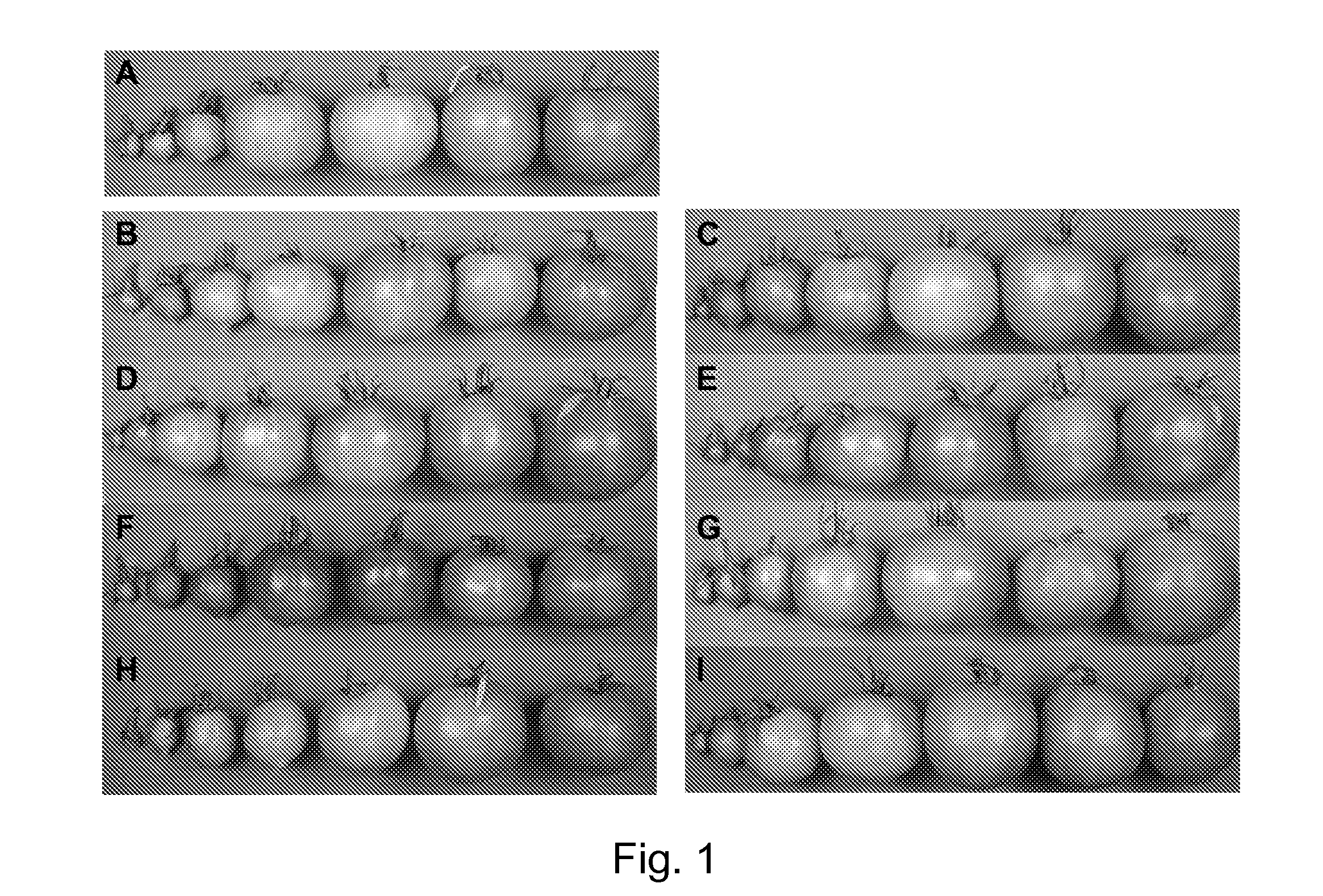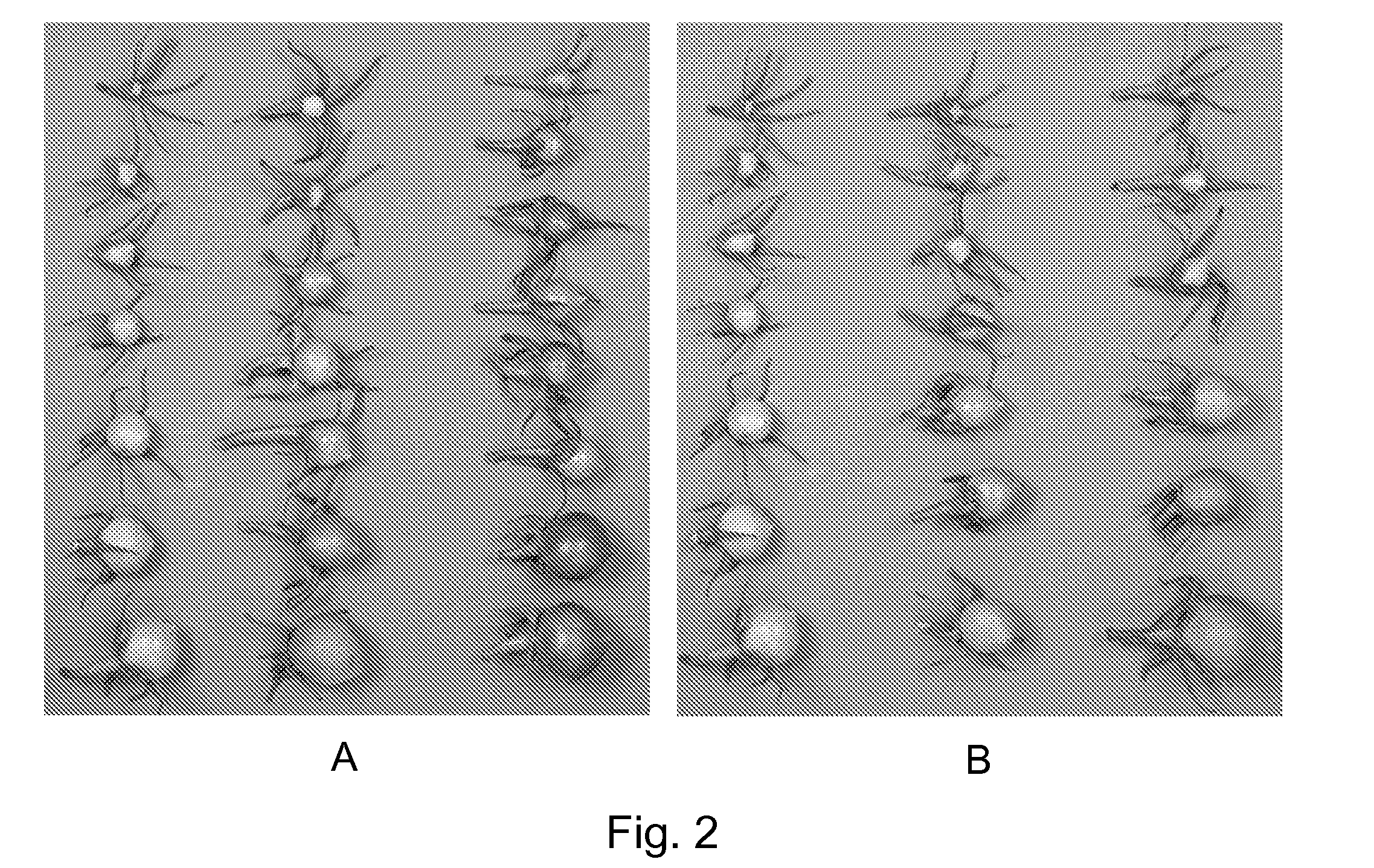Transcription factors that enhance traits in plant organs
a transcription factor and plant organ technology, applied in the field of plant genomics and plant improvement, can solve the problem of not being able to identify a complete set of transcription factors, and achieve the effects of enhanced traits, increased carbohydrate levels, and extensive chloroplast thylakoid granal developmen
- Summary
- Abstract
- Description
- Claims
- Application Information
AI Technical Summary
Benefits of technology
Problems solved by technology
Method used
Image
Examples
example i
Cloning Information
[0120]A number of constructs were used or may be used to modulate the activity of sequences of the invention. Analysis of plants is typically performed on a set of independent transgenic lines (also known as “events”) which are stably transformed with a particular construct (for example, this might include plant lines that constitutively overexpress AtGLK1, AtGLK2 or an ortholog or another clade polypeptide). Generally, a full-length wild-type version of a gene or its cDNA is directly fused to a promoter that drives its expression in transgenic plants. Such a promoter can be the native promoter of that gene, or a promoter that drives constitutive expression such as the CaMV 35S promoter. Alternatively, a promoter that drives tissue-enhanced or conditional expression can be used in similar studies. A direct fusion approach has the advantage of allowing for simple genetic analysis if a given promoter-polynucleotide line is to be crossed into different genetic backgr...
example ii
Tomato Lines, Fruit Staging and Harvesting
[0124]Transgenic tomato (Solanum lycopersicum) lines expressing transcription factors AtGLK1 (At2g20570) or AtGLK2 (At5g44190) regulated by the 35S, LTP, Phytoene desaturase (PD), or RbcS, promoters were grown in greenhouse and field trials in Davis, Calif. between 2004 and 2006. The identity of the transgenic constructs in each line was confirmed by PCR using primers for the selectable marker, each promoter and each transcription factor. Fruit were tagged 3-4 days after anthesis when they were 0.5 cm diameter, to obtain material from the same developmental stage. Mature green and red ripe fruit were harvested 32 and 46 days after tagging respectively.
[0125]To determine the role of light for the development of green color, 4 days after anthesis (0.5 cm diameter) fruit were placed in paper envelopes that blocked 80% of the light for two weeks and then the bags then were replaced with bags with three layers (white (external), black and red) th...
example iii
Biochemical and Morphological Analyses
[0126]Chlorophyll content. Chlorophyll was measured in fully expanded apical leaves and in mature green and red fruit. Tissue from the outer fruit pericarp and epidermis (0.25 g) was crushed in liquid nitrogen. One ml of 90% acetone was added to the frozen powder and the mixture shaken at room temperature in the dark overnight. After centrifugation for 10 minutes to remove the colorless cellular debris, the chlorophyll contents of a 1:5 (v:v) dilution (using 90% acetone) of the supernatant was measured using the absorbance at 645 nm for chlorophyll b and 663 nm for chlorophyll a and the amount of Chl a or Chl b was calculated according to Arnon (1949). Total chlorophyll was calculated as Chl a+Chl b. Results were expressed as μg chlorophyll per gram fresh weight (g fw) tissue extracted.
[0127]Lycopene measurement. Lycopene was measured in red ripe fruit. Frozen tissue from the outer fruit pericarp (0.25 g) was crushed in liquid nitrogen and added...
PUM
| Property | Measurement | Unit |
|---|---|---|
| diameters | aaaaa | aaaaa |
| diameters | aaaaa | aaaaa |
| diameter | aaaaa | aaaaa |
Abstract
Description
Claims
Application Information
 Login to View More
Login to View More - R&D
- Intellectual Property
- Life Sciences
- Materials
- Tech Scout
- Unparalleled Data Quality
- Higher Quality Content
- 60% Fewer Hallucinations
Browse by: Latest US Patents, China's latest patents, Technical Efficacy Thesaurus, Application Domain, Technology Topic, Popular Technical Reports.
© 2025 PatSnap. All rights reserved.Legal|Privacy policy|Modern Slavery Act Transparency Statement|Sitemap|About US| Contact US: help@patsnap.com



